5 Simple Exercises to Improve Your Posture
Poor posture not only affects you aesthetically, but it can also have physical consequences, like pain in the neck, shoulders, and lower back, as well as exposing you to a greater risk of injury. Fortunately, there are some techniques that can help you correct this problem.
5-Minute Crafts has prepared a guide filled with 5 simple exercises to do at home that are easy to implement into your daily routine.
Exercise 1
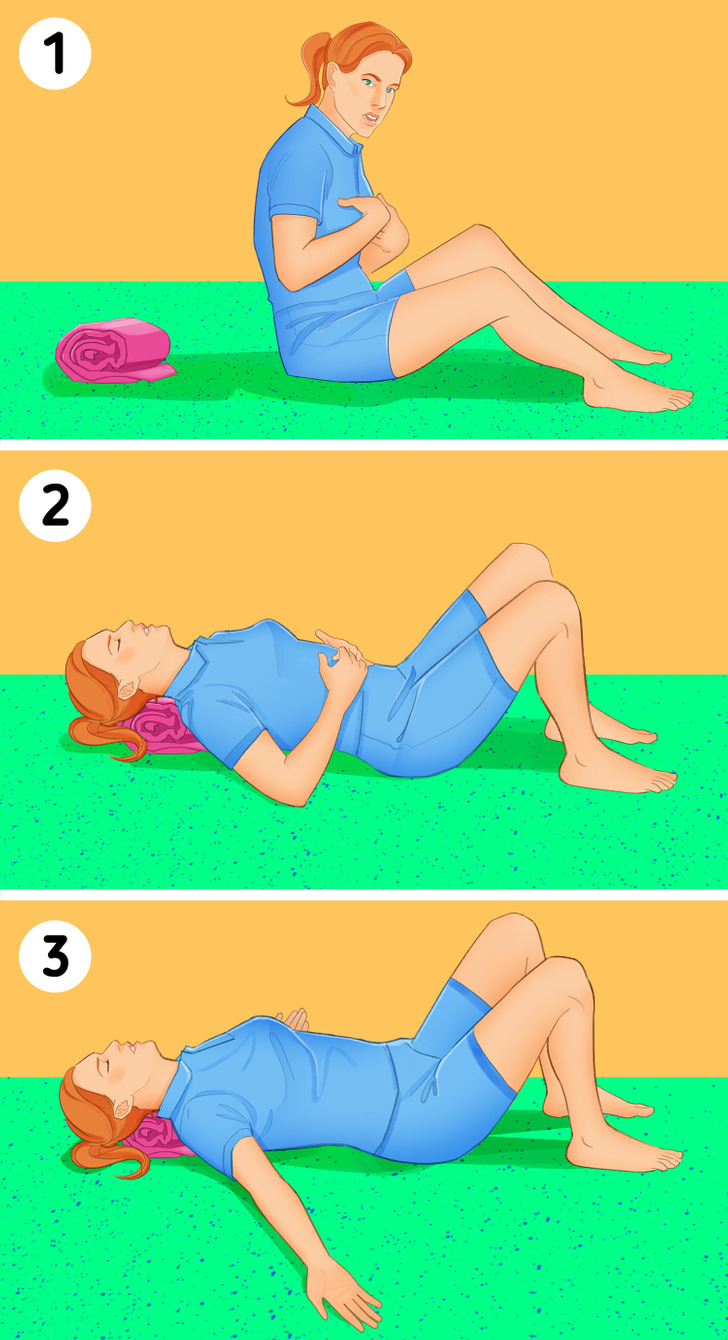
1. Roll up a towel and place it on the floor. Then sit in front of it with your legs bent.
2. Slowly lower yourself down and rest your back on the roll, at the base of the neck, which is usually where there is a greater curve.
3. Open your arms. Breathe deeply, puffing out your chest and avoiding lifting your back. Hold this position for a few minutes.
Exercise 2
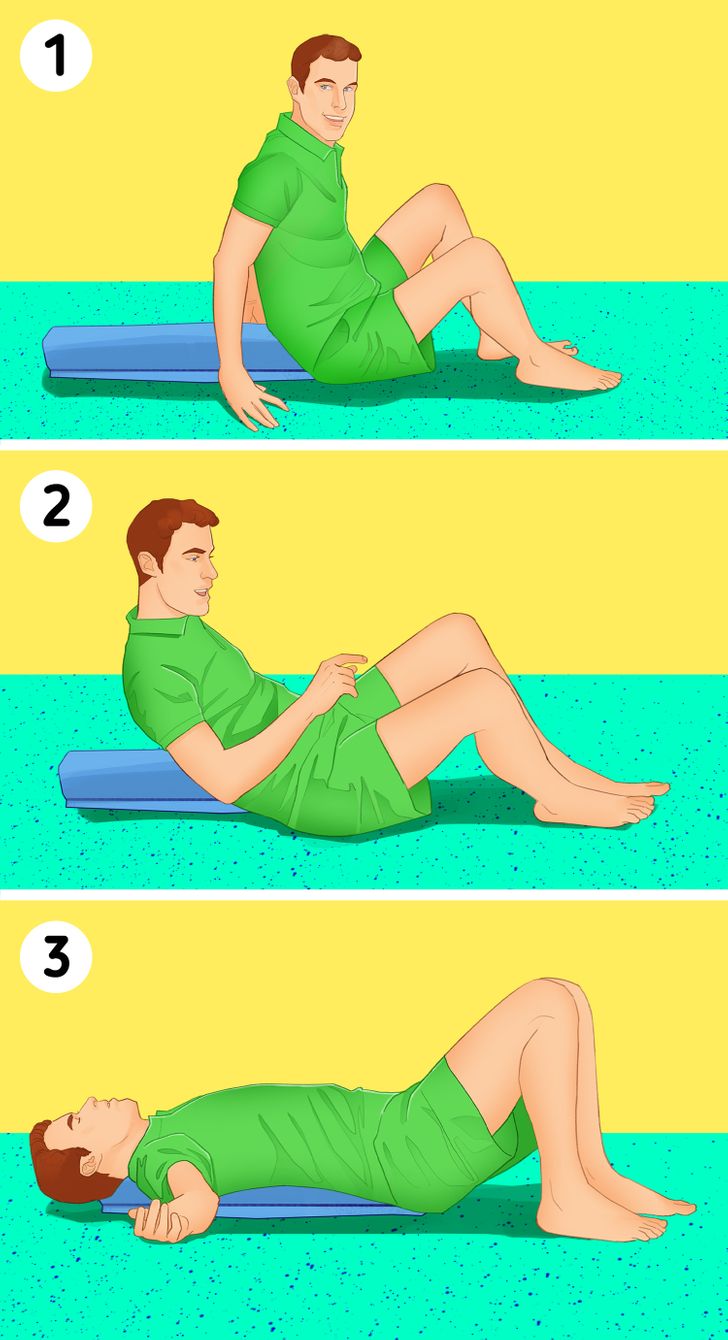
1. Roll a towel into an elongated roll. Place it on the floor and sit in front of it, with one end of the roll right at the beginning of your lumbar area.
2. Lie down on the towel slowly, keeping it in the center of your back. Make sure your head is aligned with the floor and that your legs are bent at all times.
3. Open your arms and move them around from top to bottom. You can now stretch one of your legs and rotate your body with your other leg bent. Repeat this move from both sides.
4. Return to the original pose and bring your arms behind your back with your elbows touching the floor.
Exercise 3
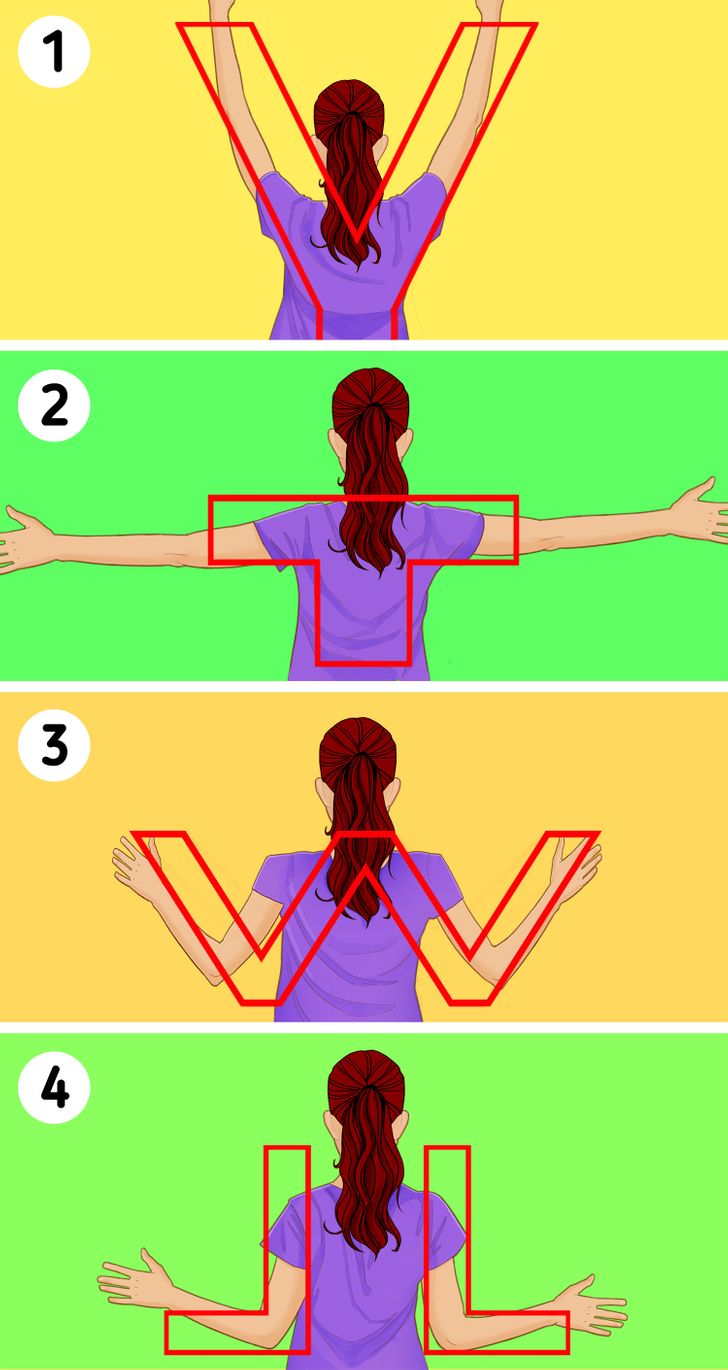
1. Stand as straight as possible and raise your arms in a Y shape. You can also perform this exercise with your knees bent.
2. Open your arms to form the letter T, keeping an upright position.
3. Place your arms to the side of your head as if you were forming a W. You don’t need weights in order to perform this exercise.
4. Lean your arms against your trunk and raise them at a 90º angle, as if you were making the letter L.
When doing these exercises, be sure to keep your arms straight back. To notice changes, it is important to follow this routine every day, and perform each exercise for 30 seconds.
Exercise 4
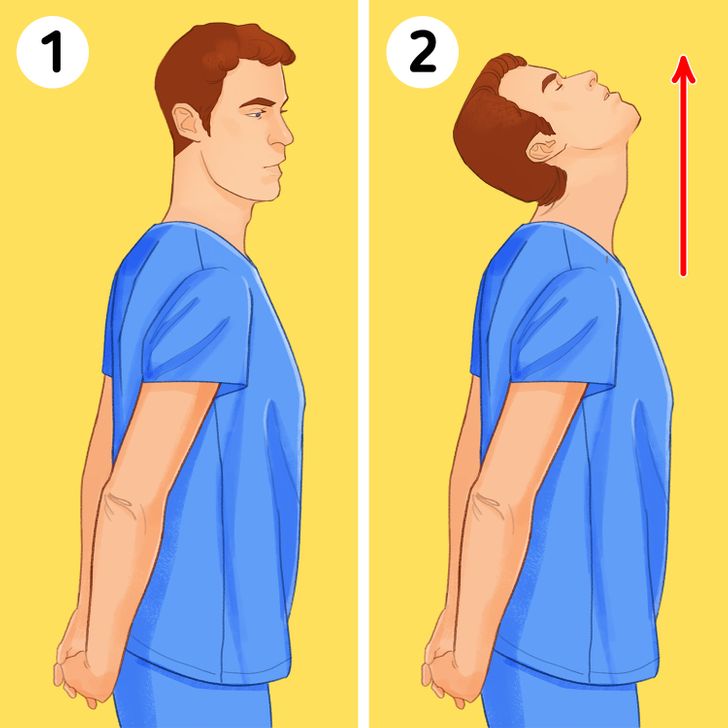
1. Stand up straight, with both arms behind your back.
2. Extend your neck and lift your head looking up toward the ceiling. Hold this pose for 5 breaths, then relax and repeat.
Exercise 5
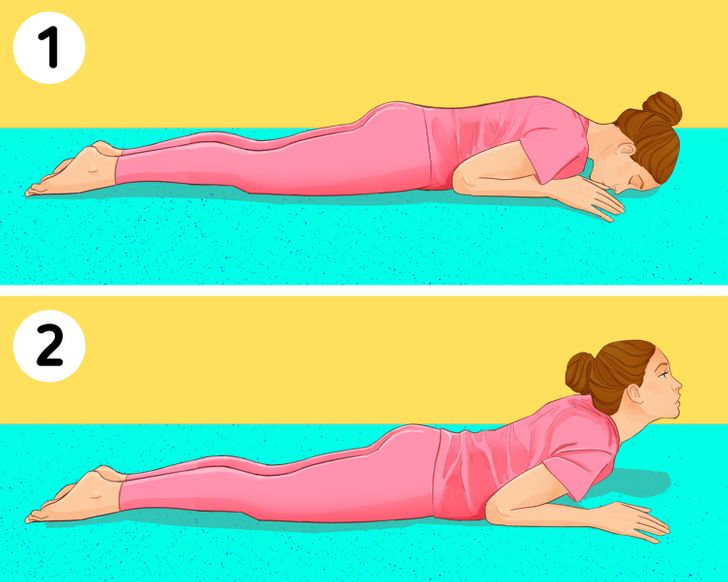
1. Lie on your stomach with your hands under your shoulders, keeping your back straight and your elbows close to your torso.
2. Extend your neck and slowly raise your head and shoulders looking up. Stay in this raised position for 10 seconds and slowly return to your starting position. Repeat 3 to 5 times.
Bonus
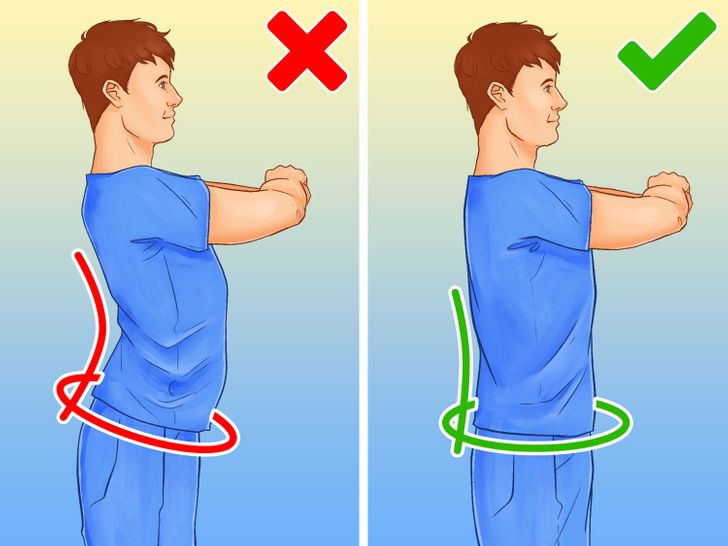
Another thing you can do to help improve your posture is to stretch both your lower back, as well as your hip flexors (muscles in front of the hip). It’s also important to strengthen your glutes and lower abs. Whichever exercises you choose to do, as long as you do them consistently, chances are you’ll have better posture in the future.
If it’s a posing trend or bad posture
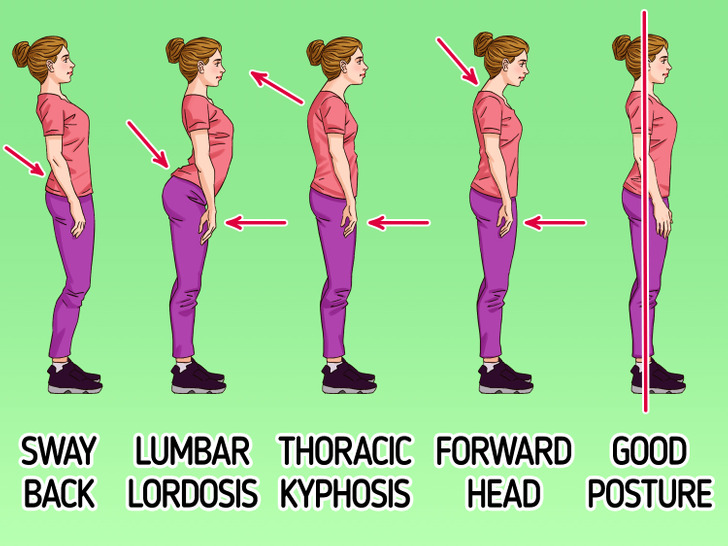
If you look at a normal spine from behind, it appears straight. From the side, it normally curves at the neck, the torso, and the lower back area. An inward curvature of a portion of the lumbar and cervical spine is called lordosis.
Hypolordosis is when there is less of a curve in the lower back or a flattening of the lower back. It can cause a narrowing of the opening for the nerves, potentially pinching them. Hypolordosis might be a result of sitting with bad posture or caused by trauma.
When the spine is affected by excessive or exaggerated inward curves, it is called hyperlordosis, and is common for dancers and gymnasts but can also be caused by conditions such as obesity, kyphosis, or osteoporosis, a vitamin D deficiency in children, and imbalances in muscle strength and height.
People who have hypo or hyperlordosis can suffer from lower back pain and pain that affects movements. So if the pelvis tilts forward when resting on top of the femurs (thigh bones), it is a sign that you might have some problems with the spine and should strengthen the entire posterior chain to help lordosis.